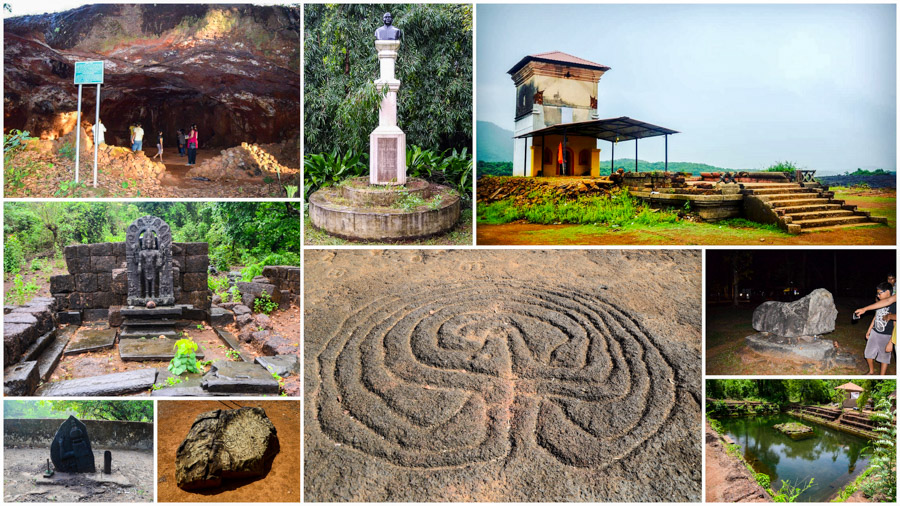
Hi Everyone,
This is Nathan Abranches here and today Let’s Travel deep into Goa’s hinterland and discover the secrets that hide among the ruins of Curdi and along the way some very interesting Goan heritage.
Photo were clicked during my trip two years back, so there might we changes at some of the sites.
Photographers: Lynn, Nichole & SEQC quizzers.
Complied with Lynn’s help.

Let’s start from Margao with the intrepid gang.
Distance: 120kms (from Margao via Military Camp, Quepem and back via Chandor)
Time: Full day (8am to 6pm)
I have shared google location to help you find the places easily.
Distance and time measured using google maps and are approx.
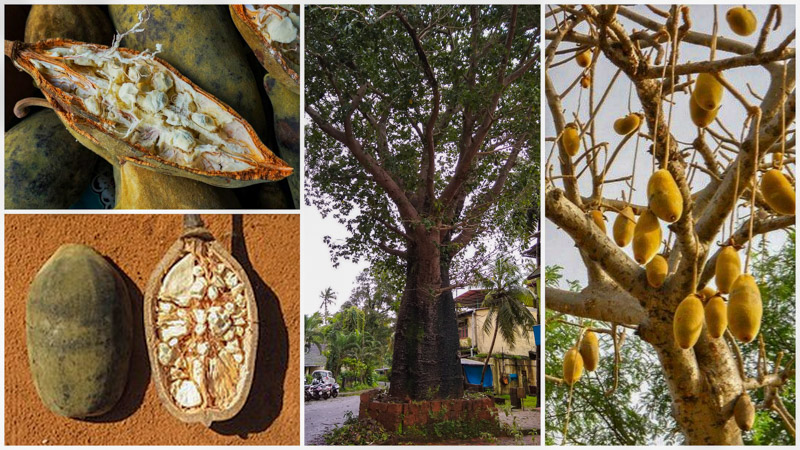
First stop
Baobab tree
Opp Quepem Police Station
https://goo.gl/maps/6G3dJGgSC4MEzUo36
16kms – 30 min
called “Gorakchinch” in Konkani, it is believed to be have been brought to Goa by the Portuguese, this is one of the only 4-5 trees found in Goa. Their capacity to store vast quantities of water in their trunks has earned them the name ‘Tree of Life’ and a single tree can hold up to 4,500 litres of water.
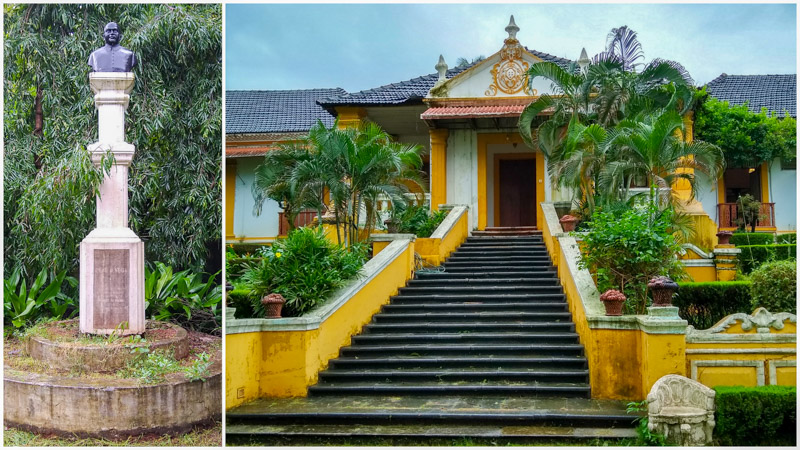
Palácio do Deão
https://goo.gl/maps/6JZQYYom3998qFYK6
3kms – 7 min
This 225 years old mansion was built by a Portuguese noble man, who was the Dean of the Church, and founder of Quepem town. The mansion is now maintained by Ruben da Gama. You can see the mansion from outside, but to visit inside you might have to call and tell him you are coming.
+91 (0)832 266 4029, +91 98 2317 5639
http://www.palaciododeao.com

Sirvoi / Zambaulim
(somewhere near Riverside Goat Farm)
is home to few of the last potters in Goa. If you want clay flower pots you can ask Vishwanath Shetkar (ph: 7218955250 / 7887489976) to make, customised to the size and shape you want. You will also find him and his wife selling their clay products during the Holy Spirit feast fairs in May & December at the SGPDA ground.
(to go to his house you will have to take the road to Peace Valley hotel, go past it, turn right, go past Joshua Farm for about 2.5 kms, his house in on the left)
There is also another family of potters whose many members are blind, they stay near the Dhyan Foundation Gaushala, Zambaulim, they often sell their products at the Quepem Sunday market.
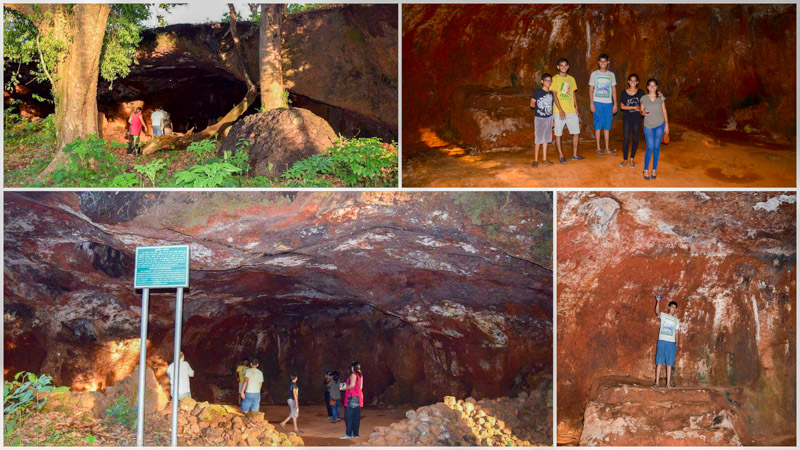
Rivona Caves
near Shree Vimleshwar Temple
https://goo.gl/maps/4FabQEQjeENJQmzX8
10kms – 20 min
The Rivona Caves also known as the Pandava cave are rock-cut caves thought to have been used by Buddhist monks in the 6th or 7th century. At the cave one can see a “Pitha”, which is carved out of laterite and is believed to have served as the seat of the teacher. The cave is considered one of the few examples of Buddhist influence visible in Goa today.
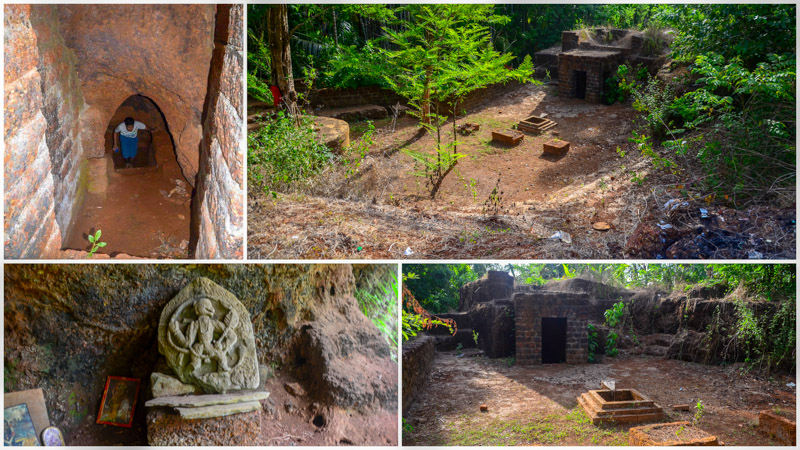
Rivona Caves
near Maruti Temple
https://goo.gl/maps/zicXewkwKA1YMZQm8
1km – 5 min
Smaller in size, cut from rock, is two storied high with rooms and a well inside
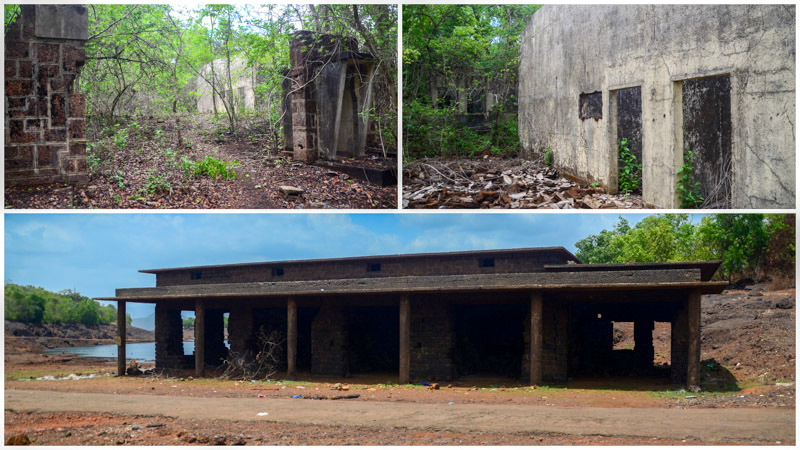
Kurdi
https://goo.gl/maps/YUYu7Hc1n8N5e1uSA
9kms – 30 min
as you make your way through the forest the first sign of habitation are these ruins (top row pics) which were those of a police station and some Portuguese guest houses called Dokami. A little ahead are ruins of what used to be shops and a flour mill, (bottom pic) turn right and follow the mud road
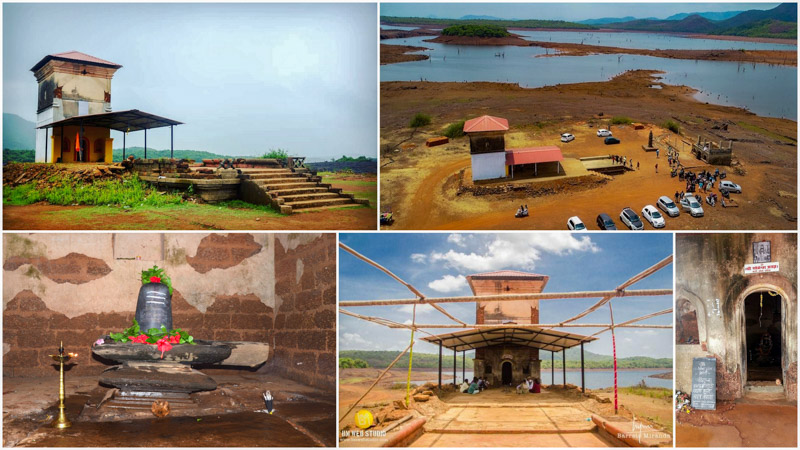
Kurdi – Someshwar temple
https://goo.gl/maps/JtQFUF9LLm3JhAJo7
2kms – 8 min
The village was submerged in the 1980s by the reservoir of the Salaulim Dam. Every year, at the peak of summer during May, parts of the submerged village rise above the water level. During this period, the original villagers come back to celebrate utsav at Someshwar temple to recollect their memories and for the love of their ancestral place.

Utsav is usually held on the 3rd Sunday of May
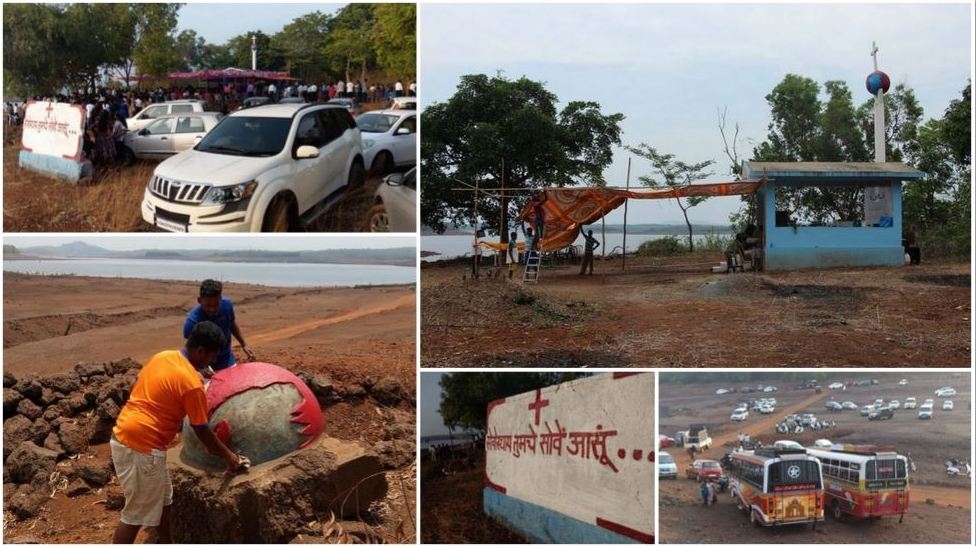
and the feast of the Sacred Heart of Jesus at the chapel is held on the 4th Sunday of May

Someshwar temple
circa 1980
before the dam was built and the area got submerged
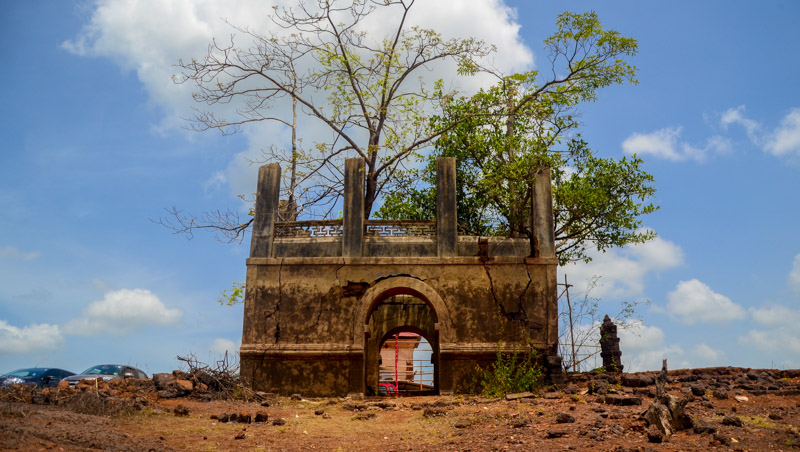
Shezo
A concrete formation in front is Shezo. It has two arched doors, one facing the temple and other facing the river. This used to be a green room for performances that happened on a stage between the temple and the river. It was also used as a music room and storeroom for the temple and the artists.
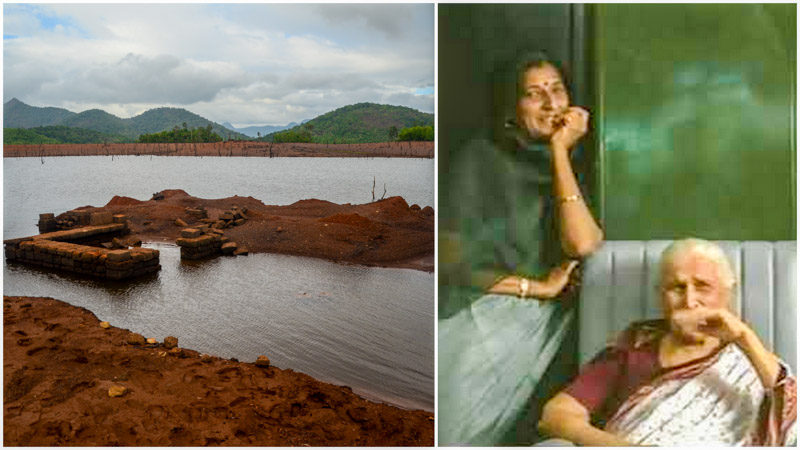
Padma Bhushan recipient Mogubai Kurdikar (15 July 1904 – 10 February 2001) the renowned Indian classical vocalist of the Jaipur-Atrauli gharana was born here, her house lies submerged a little ahead.
(L) Mogubai Kurdikar with her daughter Kishori Amonkar
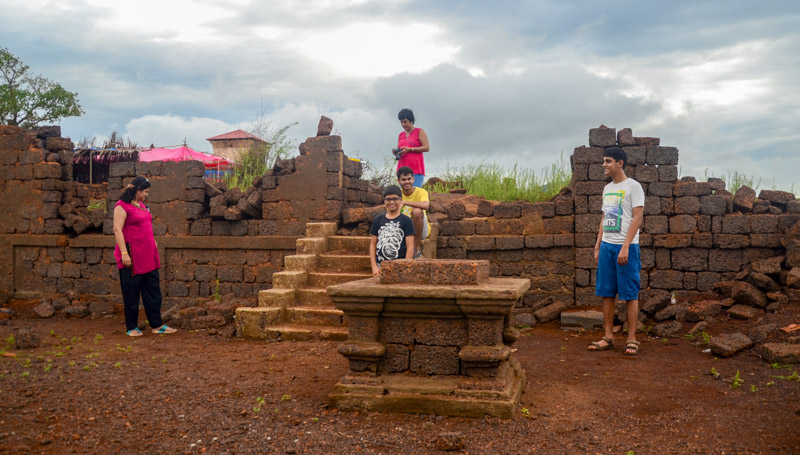
exploring the ruins of what would have been someone’s home overlooking the river
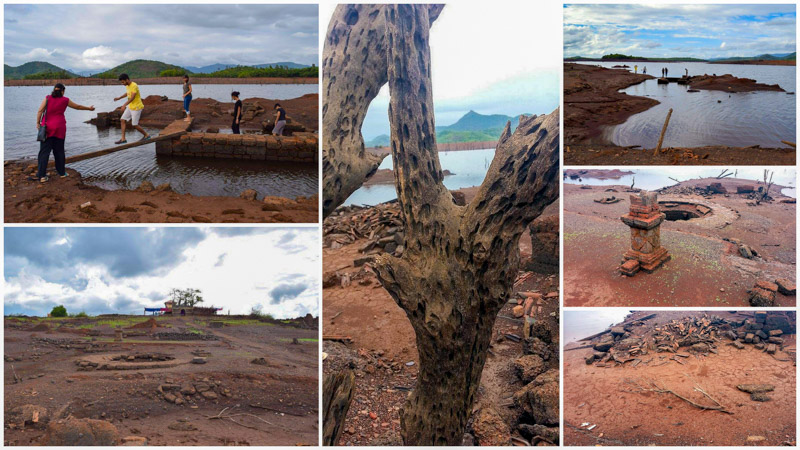
…….more ruins
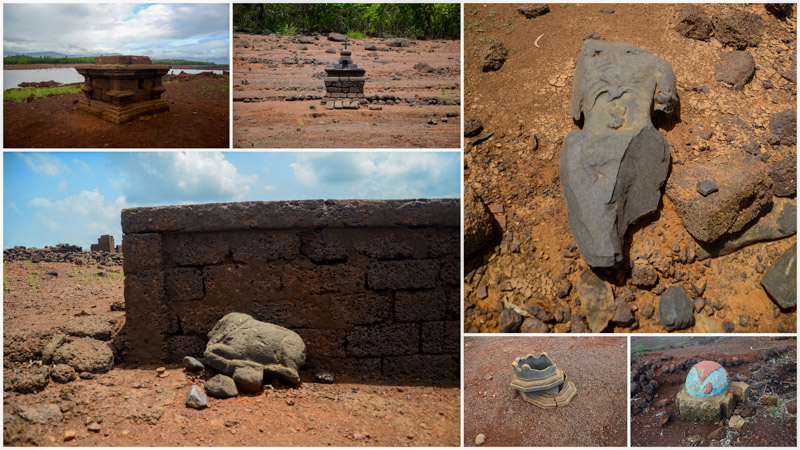
……..and some more ruins, a half broken Betal statue, a Nandi bull, some tulsi pedestals and a broken globe from the chapel

on our trip we were fortunate to meet Mr Gajanand Kurdikar, this tulsi pedestal was part of the house that belonged to his family.
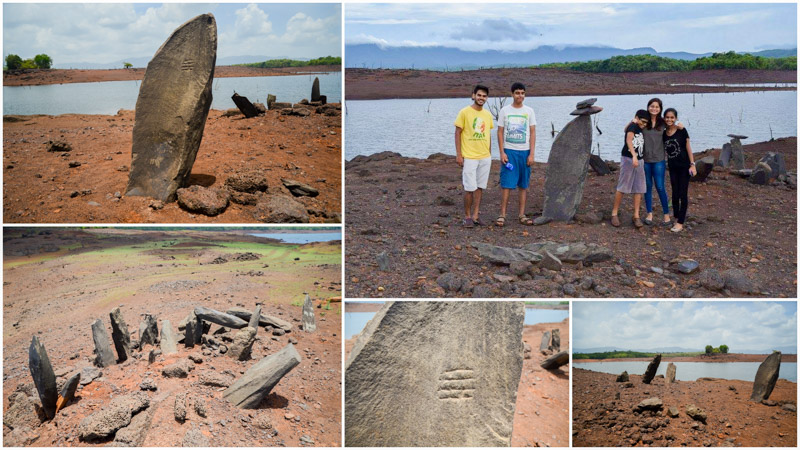
Ruins of Dolmen / Stonehedge???
they are arranged in a rough circle. I wonder if they have a story to tell.
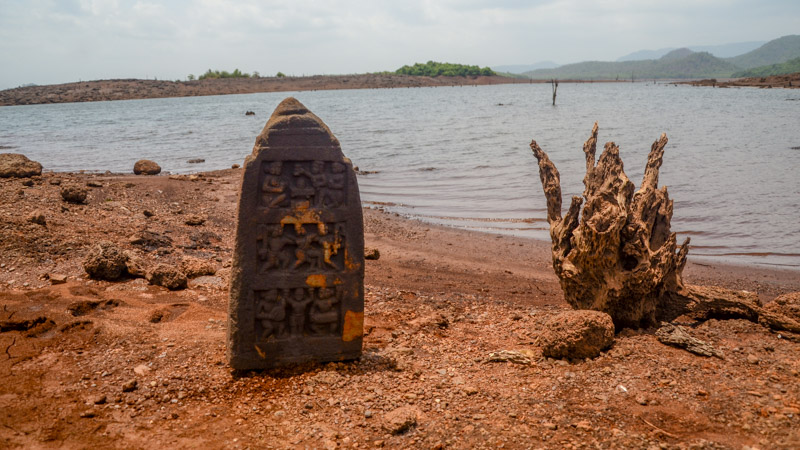
Hero stone
a beautifully carved Hero stone that had resurfaced, now in the possession of the Directorate of Archives and Archaeology
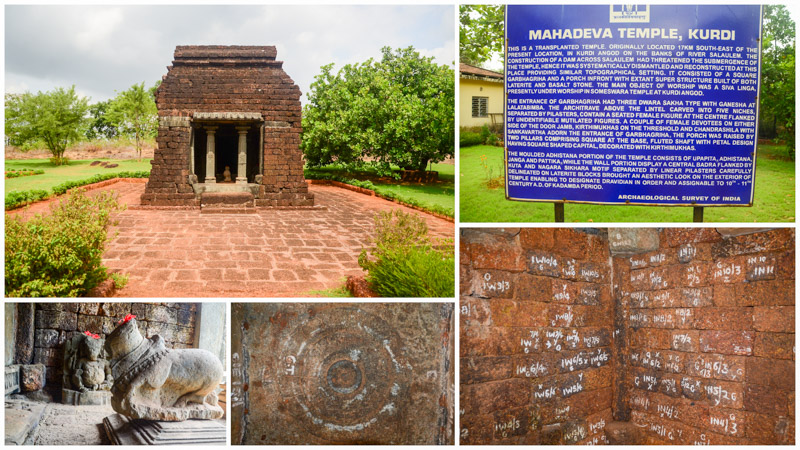
Mahadev temple
archaeologically dated to the 10th–11th century of the Kadamba period, was also relocated to a site 17 kilometres away near the dam. The relocation was done by dismantling of the original temple and then reassembling it at the new location after methodically numbering each stone, over a period of 11 years.
https://goo.gl/maps/5cThYfg9iWzo85EK7
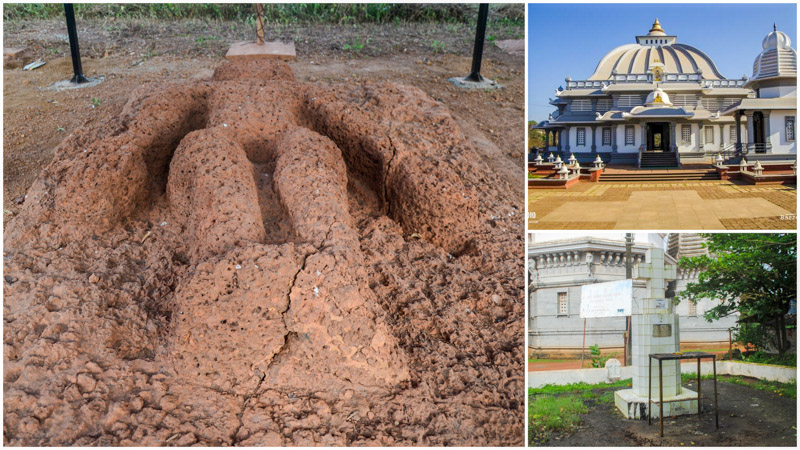
Mother Goddess
this 2.5 metres (8 ft 2 in) megalithic structure (dated to 5th century BC), a 16 tonne image, from the village was relocated to Shri Mahalasa Narayani Temple at Mardol, Verna. If you wish to see it, can take you there, it is close to my home in Verna.
Next to the temple you will also find a cross where the first mass in Salcete was held 1519.
https://goo.gl/maps/YCdMQC7ZoC3SsAhdA
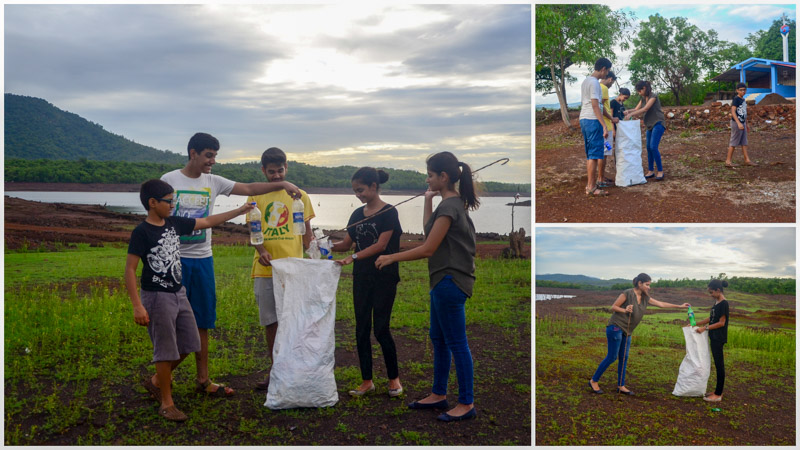
While we’re here, let’s not forget to be respectful and pick up plastic litter and other trash left behind by previous visitors, so we can dispose it off responsibly.

Netravali Bubbling Lake
https://goo.gl/maps/47Az6WUBs7i1EKzr6
15kms – 40 mins
This freshwater lake lake gets it name cause of the small bubbles that pop up and create concentric ripples. Recently a major renovation has been done to the entire place.
Legend states, a young virgin was buried alive upside down as a sacrifice before the lake was built and every time she tries to free herself, she burrows further into the ground causing bubbles to pop on the surface of the water…….okay, I made this up

Tanshikar Spice Farm, Netravali
tanshikarspicefarm.com
09421184114
https://goo.gl/maps/WbgG7pHo4mi4ULq3A
2km – 5 min
The farm is located next to this lake and and they serve delicious food at their restaurant. They also have mud and tree cottages if you wish to stay and they conduct trekking tours around Netravali, besides selling spices grown on their farm. You might have to inform a day prior if you are stopping for lunch, like we did.
If anyone knows of other places/restaurants for lunch around the area, please share details.
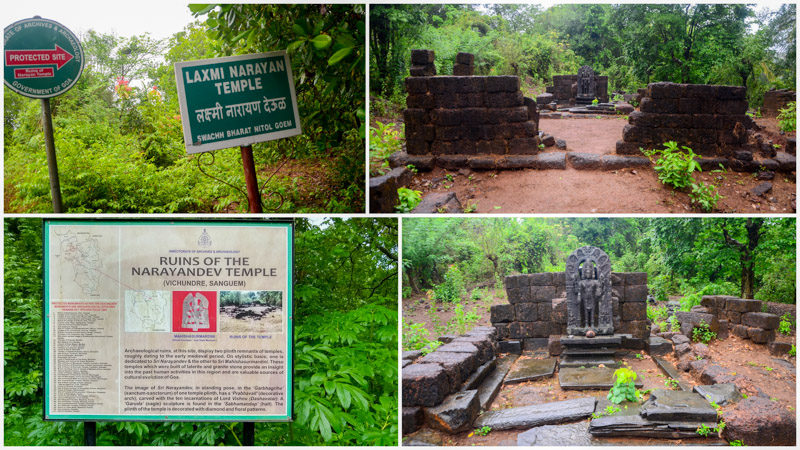
Ruins of Narayandev Temple, Vichundrem
https://goo.gl/maps/UQ5pEdRyZRyKwcZE6
4km – 8 min
here lie the ruins of an ancient temple of Narayandev, dating most likely to the 11th C. The Directorate of Archives and Archaeology is doing a good job of restoring the site.
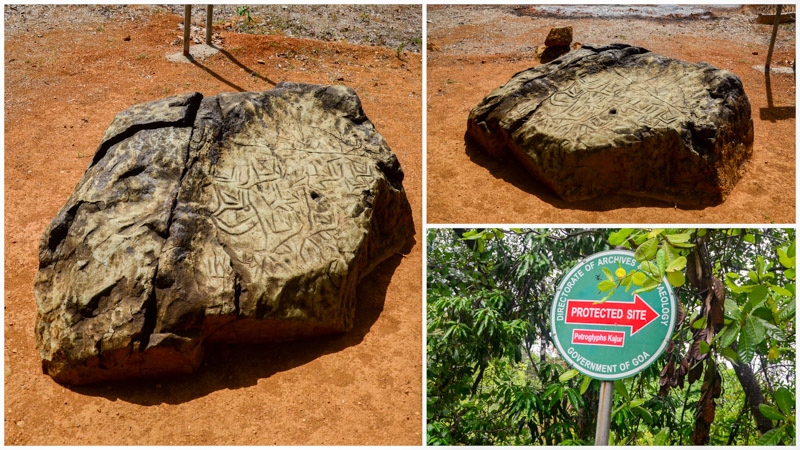
Dudha Fator (Milk Stone), Kazur
https://goo.gl/maps/BuZAK33zawH4BRoJ7
7km – 15 min
to see this white stone you will have to walk through paddy fields for about 250 mts. The single stone has carvings of different type of amimals. Unfortunately as it is exposed to the elements the stone is cracking up.
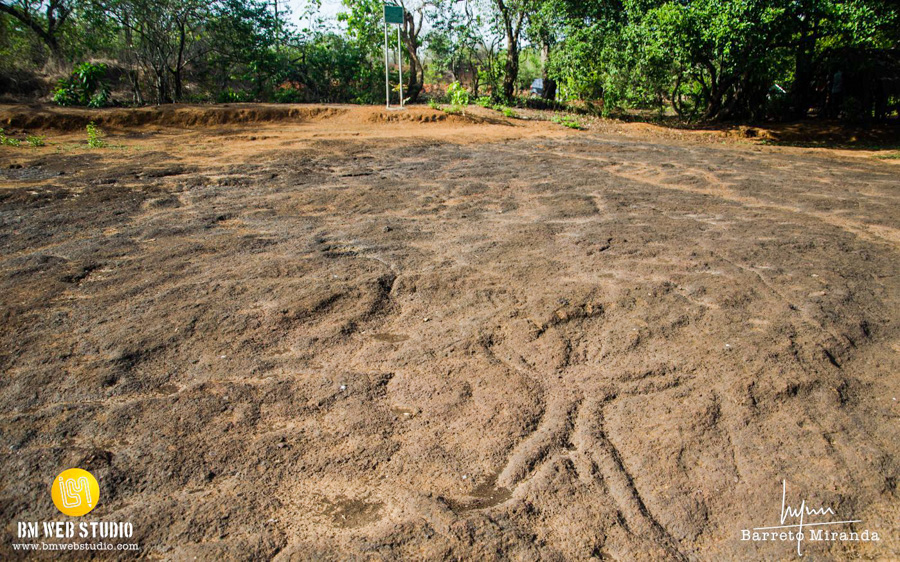
Usgalimal Rock Petroglyphs
https://goo.gl/maps/nuu3R9eDTTY3Vtiq7
12kms – 20 min
Uncovered a few decades ago when some contractor came here to excavate rock to use for building, and decided to show what he had uncovered to a historian. Archaeologists believe these carvings can be anywhere from 8000 – 9000 years old belonging to Mesolithic period.
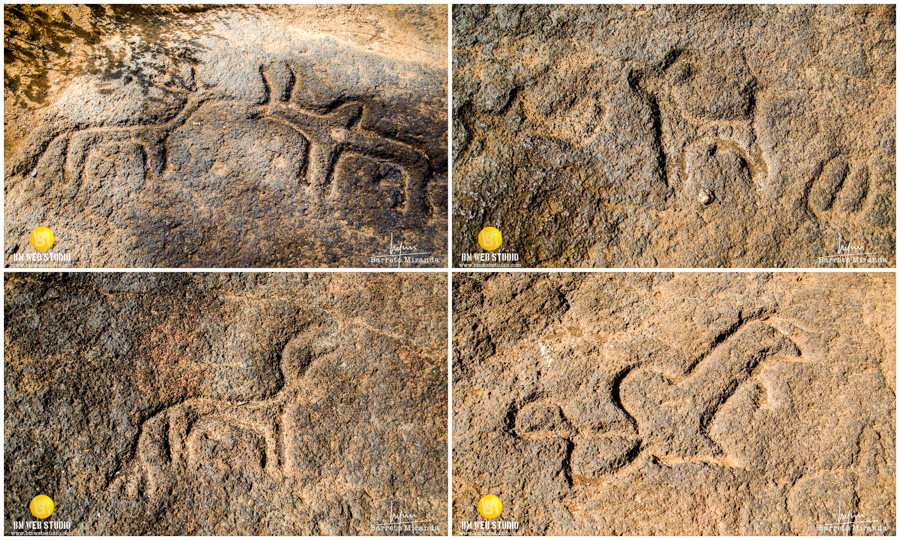
Carvings of Animals
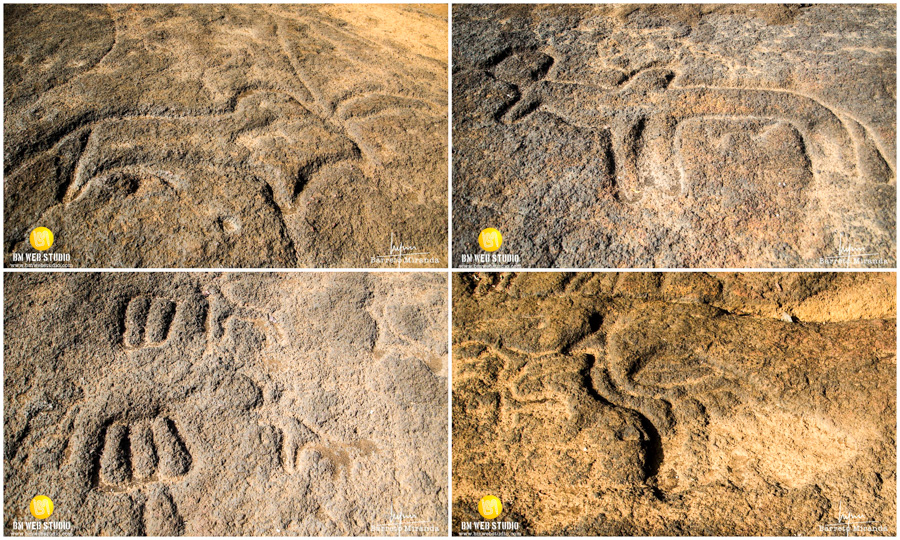
Animals and Peacock
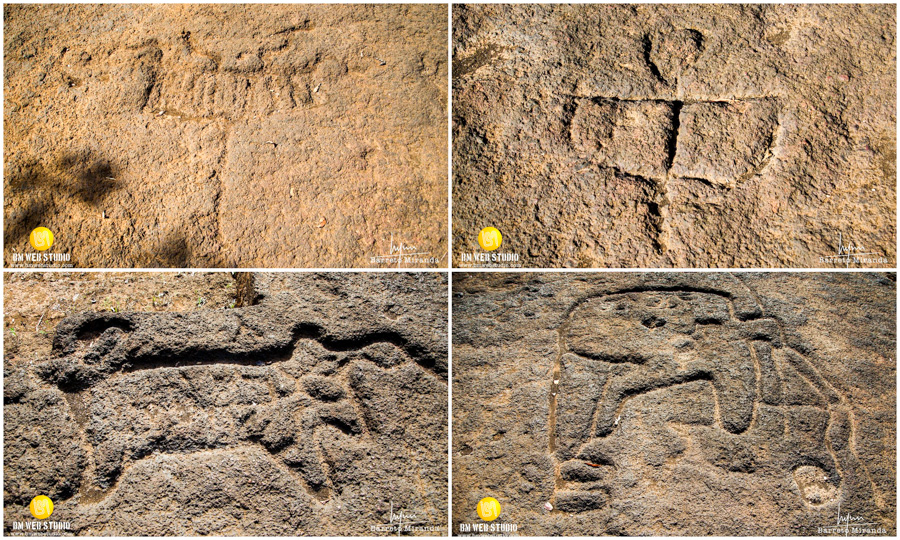
TR – the guide said was a carving of a baby
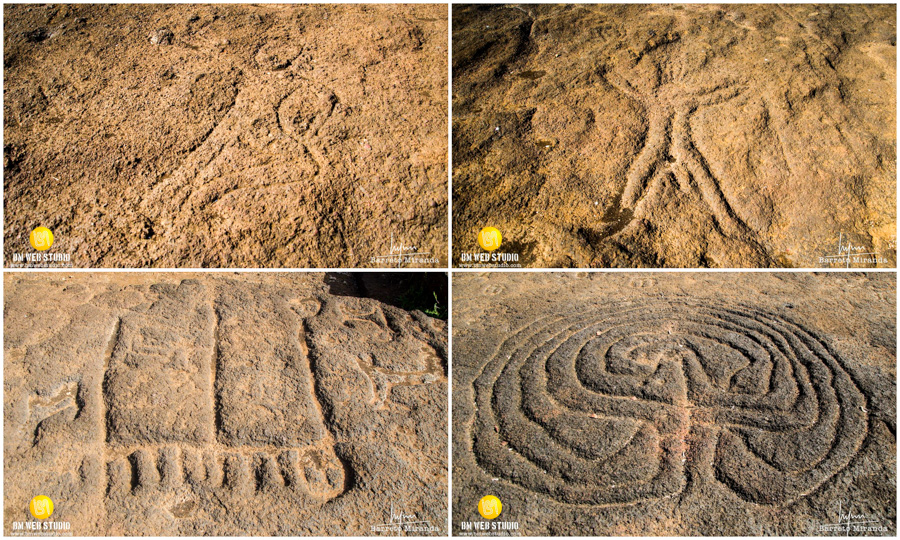
Humans, Big foot, Labyrinth
FYI – the logo of the Goa Heritage Action Group is based on this labyrinth
These petroglyphs aren’t going to last forever, the laterite stone is slowing getting washed away as they lie on the bank of Kushavati river and get submerged during monsoons. Go and see before they disappear.
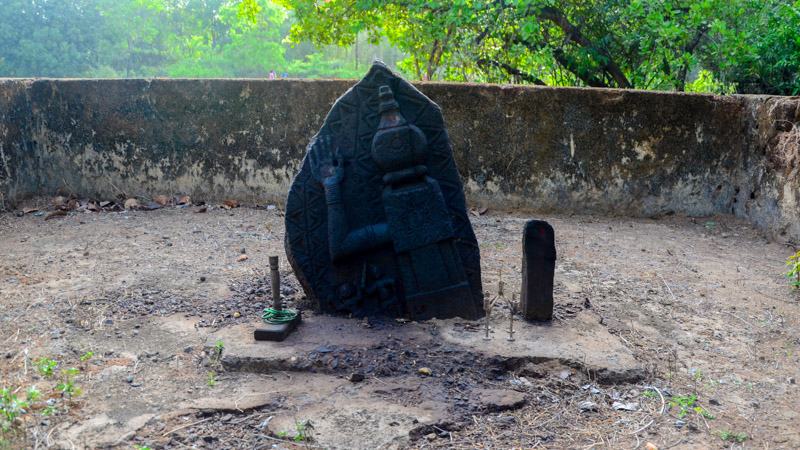
Sati Stone
Kshetrapal Temple, Assolda
https://goo.gl/maps/gHFtHCad8pz8mGv2A
22kms – 35 min
A Kadamba-era sati stone probably of a queen who scarified her life after the death of the king.
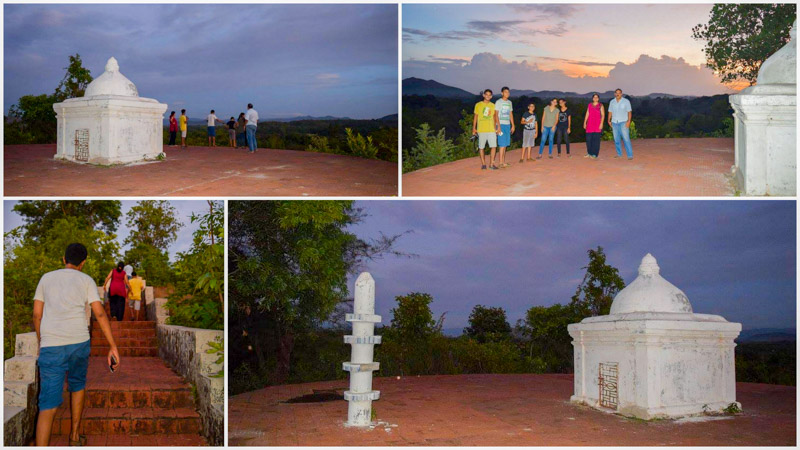
Just off the sati stone spot, 75 steps lead you to the top of the hillock that offers a great view of Chandor.
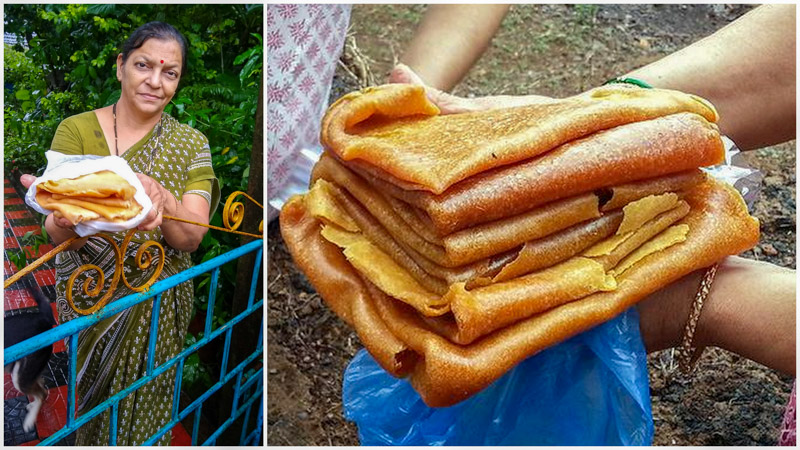
The lady who lives next to the sati stone makes mouth watering mango saath, that she makes from her orchard’s fruits, do not forget to buy, you will not regret.
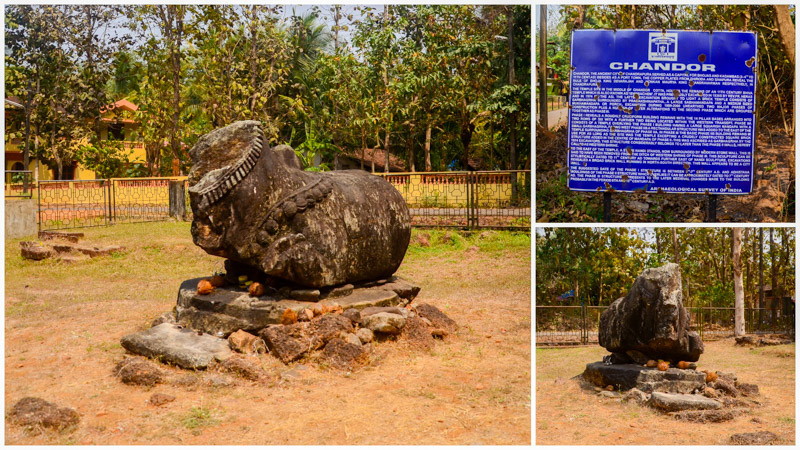
Nandi Bull
Excavated Site of Chandrapura, Cotta, Chandor
https://goo.gl/maps/kV8XpZAGsUxHsCX67
2km – 5 min
In 1930s Fr. Henry Heras, SJ excavated the site and unearthed a 11th century Shiva temple and also a headless Nandi bull. The Nandi bull is, said to be the biggest in India after that of Mysore, which latter it resembles in its art but not in size. It would probably have been battered during wars by invaders, hence the missing head.

St Tiago Chapel, Chandor
https://goo.gl/maps/KARX1K4pvpbKa7f37
2km – 5 min
According to legend, the local Kadamba ruler Harihar received no support from his people while fighting the Portuguese and was killed. His wife, the queen of Chandrapura, cursed the town, saying that all their women would turn into widows. She went on to stomp her feet on a stone outside a temple. A stone bearing her ‘footprint’ is maintained outside the St Tiago chapel to this day.
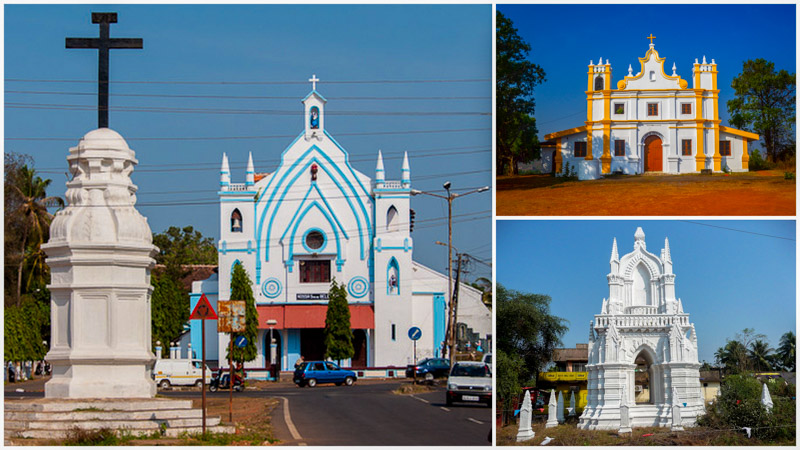
Nossa Senhora de Belem Church, Chandor
https://goo.gl/maps/t6BShEs51KotpQTK8
2km – 5 min
When built originally in the 17th century, it was called Our Lady of Remedies. However, after it was reconstructed following a collapse in the mid 20th century, it was renamed to its current title. The church is located at the main intersection of Chandor and just across the Menezes Braganza house. The annual feast of Three Kings is held here on 6th January.
You can get a 360 deg view of the countryside from the Chapel of Lady of Piety which is perched on top of the hill. (TL pic)
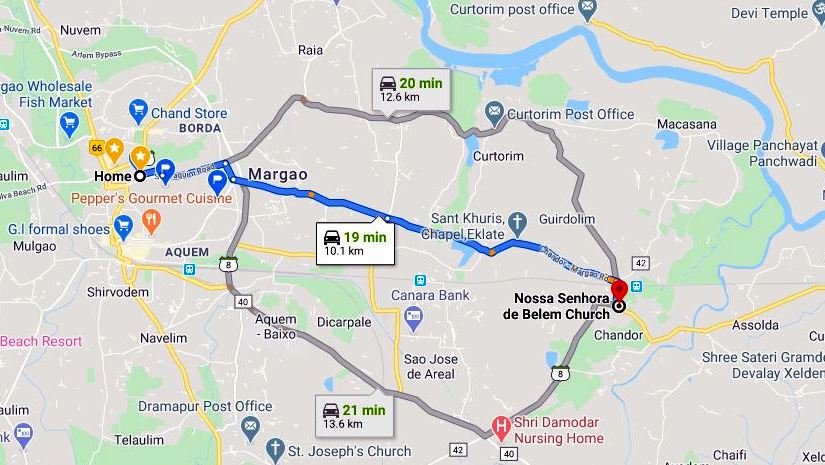
…back home to Margao
(via Marmagoa Steels, Housing Board)
12kms – 20 min

Of course, once you’re back home, don’t forget to share your stories to Facebook, Instagram and Twitter to remind the world that Goa is not only beach and booze but has an enigmatic past and an opulent heritage too.

Nathan Filipe Abranches
This presentation was shared on the Let’s Travel whatsapp group in July 2020.
Let’s Travel is a whatsapp group created by travel enthusiasts to share their travel stories and memories.
Its an open group, to join click the link: https://chat.whatsapp.com/ITeMEV5DQkr8SiPP7Wak5R
#travelstories #whatsappstories #letstravel
